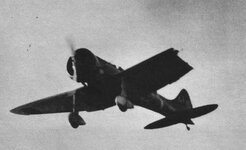An incendiary round going through the ammo belts will ignite every charge of powder it hits, theirs 1.4kgs of powder per 100 .50 cartridge's, the P47 carried around 1600 rounds, do the math's. As to which plane had armored ammunition bays, the spit after it got cannons for exactly that reason.And do you have any links to verified instances of a fighter's ammo cooking off in the wing due to hits? How many fighters of the day had armored ammo storage? Please, be specific.
Last edited:

